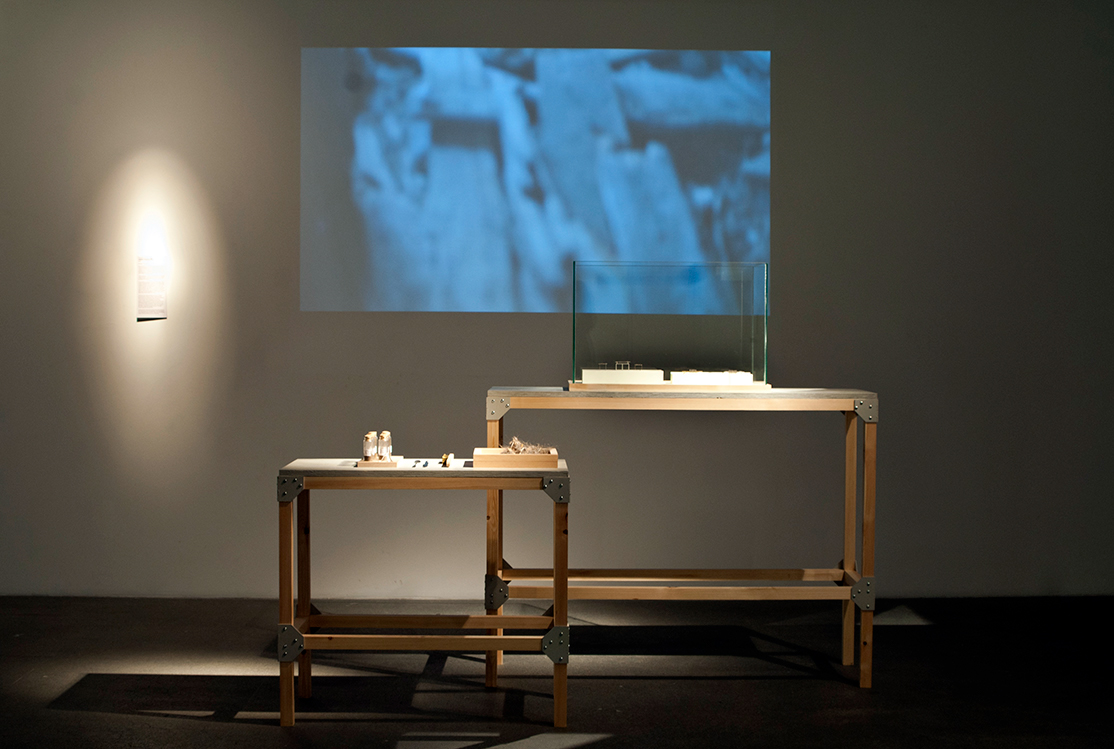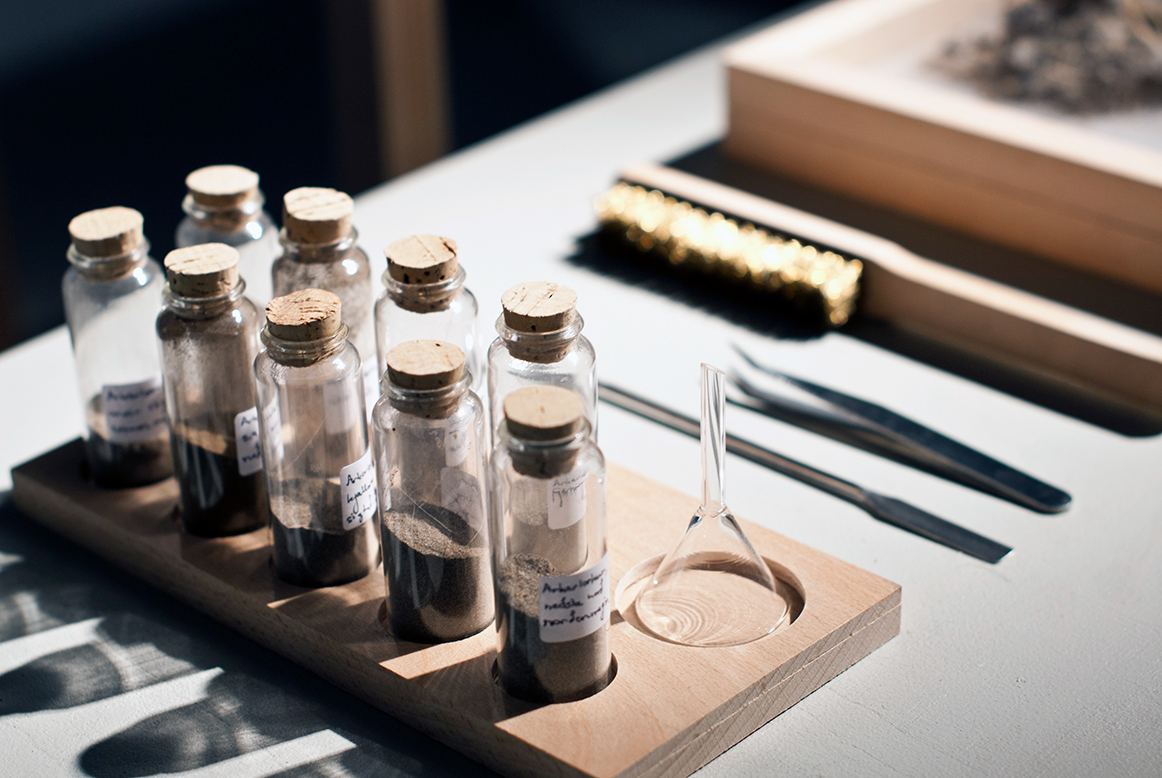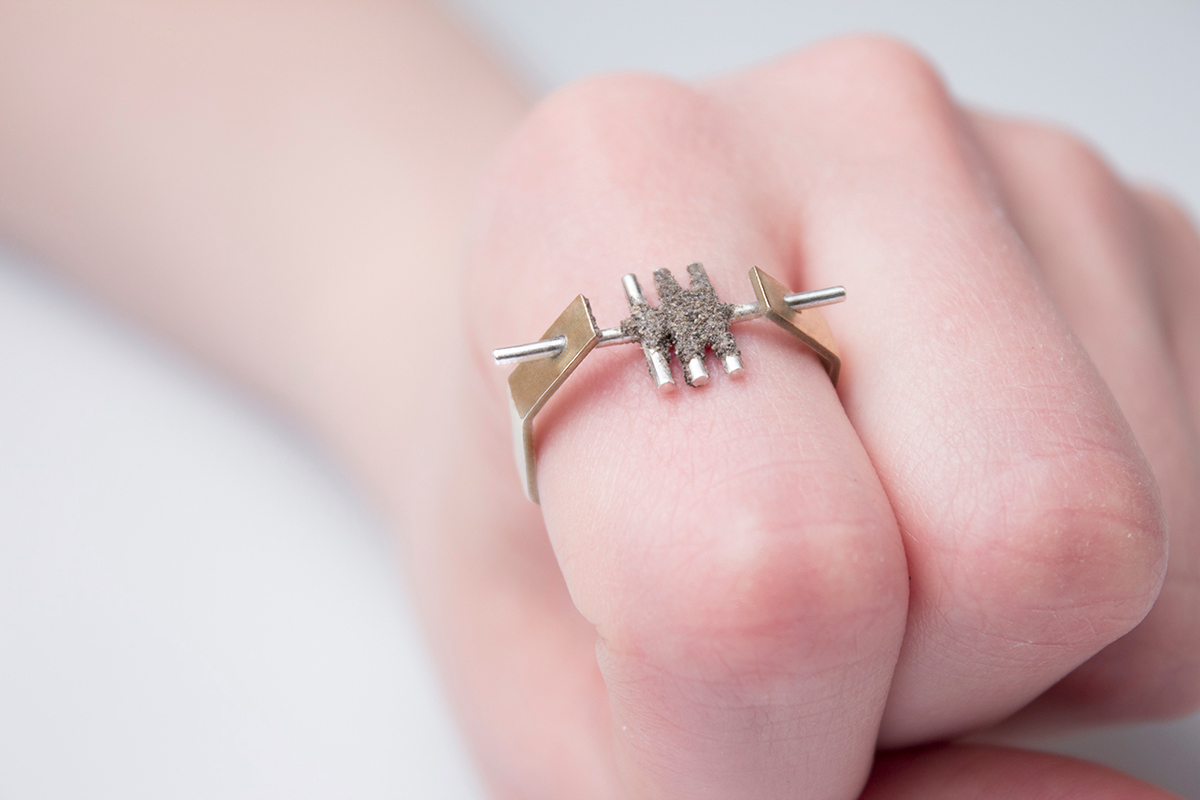Dust is a collection of jewellery that allows the wearer to experience themes of transformation and disintegration.
In this world everything existing is linked to the process of birth, decay and disappearance. That is the way of life, the way of nature. Inspired by the tradition of the symbolic Vanitas paintings, the Dust collection is a reminder of the transience of all earthly pursuits and how it can be a motive for design.
This ideology led to an exploration of how to break traditions and create new ways in material use. It is a reflection on material worth. A contemplation for the constant transformation of matter. We always demand that everything should be flawless but in the end, everything is dust or in time becomes dust. Is it possible to make use of materials that have always been considered nothing more than useless dirt?
Dust is a material that is the ultimate result of disintegration. It is everywhere and ever-present, a substance of tiny particles of matter. It is a material mixture of both organic and inorganic origin constantly being generated. It is everything and yet metaphorically the embodiment of nothingness. It is a matter that is often overlooked, a matter that most consider nothing more than an unaesthetic inconvenience, a mundane matter that man constantly tries to get rid of but to no avail.
In order to pursue dust where it settles, the most obvious way was to explore derelict and abandoned places where time has stopped, man has left and the forces of nature have taken over. Considerable attention was taken to collect dust as a raw material in nooks and crannies in various abandoned farms scattered across the Icelandic countryside.
The form of the Dust jewelry originates from these deserted farms. The dust is given value. With the use of a biodegradable adhesive, it is transformed into a jewel coating where it can emit transience once more. With time it withers away, revealing a manmade structure, a sort of skeleton within, giving the bearer a chance to savour every moment of its life span. It is a celebration of the fragile beauty that time and use impart to materials.
Dust is a part of the Spiritualism, Craft and Waste series of projects realized by graduating students from the Product Design Department of Iceland Academy of the Art 2014. The collection originates from a study of the contemporary role of the designer. Emphasis is put on the question why rather then how? It is a redefinition and revitalization of modern values: instead of focusing solely on the making of commercial merchandise, designers should start to question the impact of their work on other living systems.
Led by Garðar Eyjólfsson and Thomas Pausz







